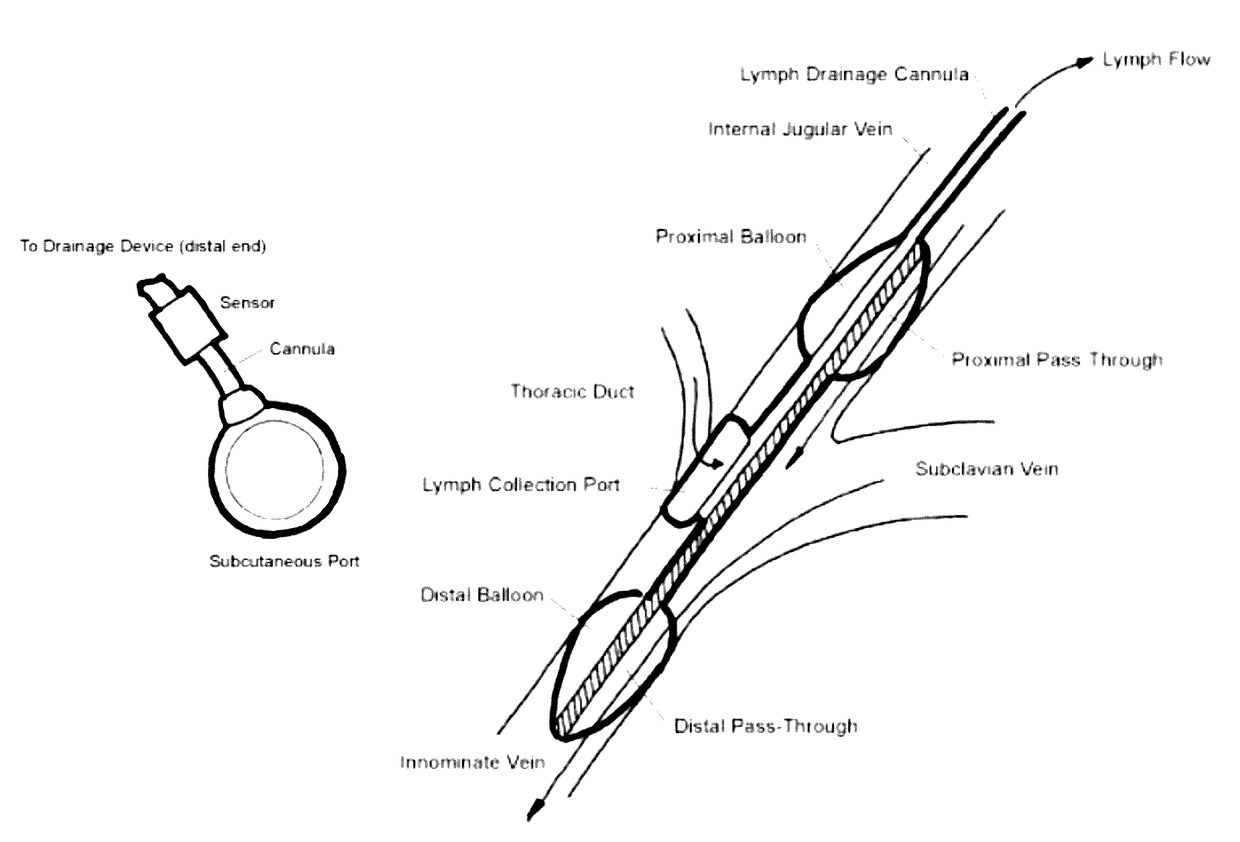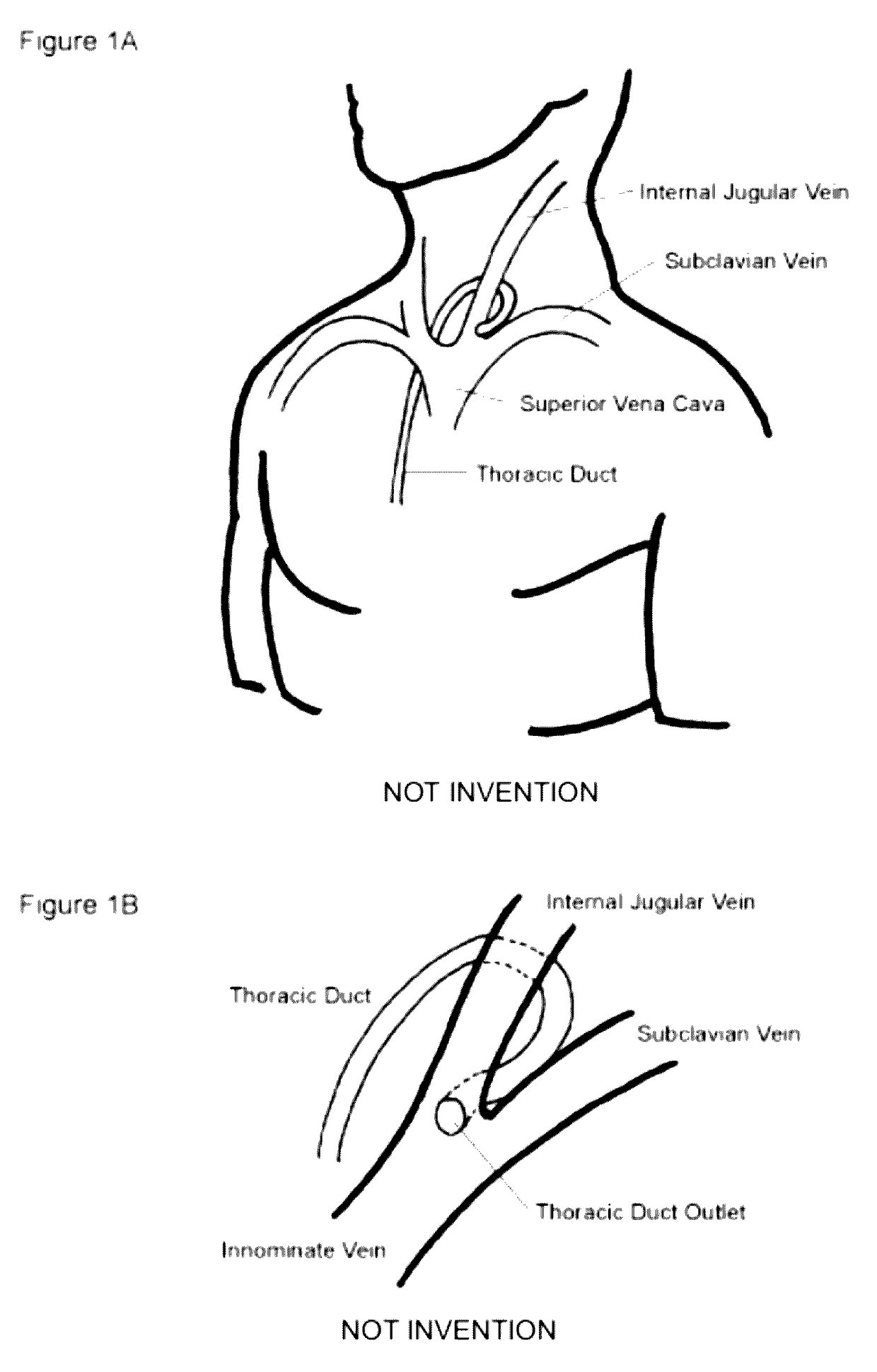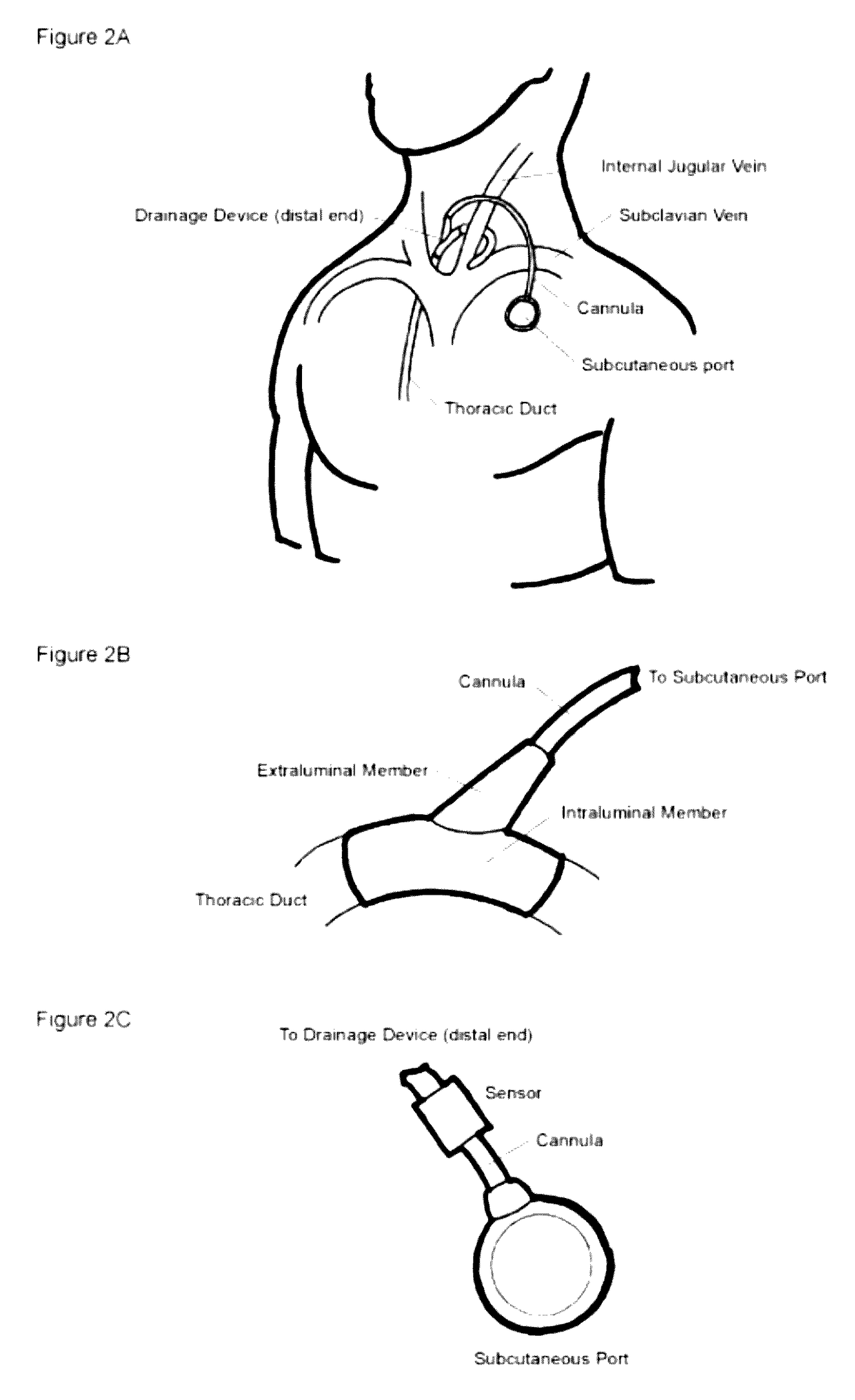Drainage devices and methods for use
a technology of lymphatic drainage and draining device, which is applied in the direction of catheters, blood vessels, angiography, etc., can solve the problems of reducing cardiac performance, affecting the accuracy of immune suppression, so as to reduce the infection rate, the effect of safe and minimally invasive methods and accurate indication of the level of immune suppression
- Summary
- Abstract
- Description
- Claims
- Application Information
AI Technical Summary
Benefits of technology
Problems solved by technology
Method used
Image
Examples
Embodiment Construction
[0056]The devices and methods disclosed herein enable removal of fluid from a vessel within the body. For example, the device can be placed in a lymph or blood vessel to remove lymph fluid from the body. The removal of lymph fluid can reduce the hemostatic pressure in the lymphatic system, reducing symptoms of congestive heart failure.
[0057]The device can access the lumen of a body vessel, for example, a lymphatic vessel and / or blood vessel. Fluid can drain from the vessel into the device. For example, the device can be in fluid communication with the thoracic duct or central veins (e.g., subclavian vein, internal jugular vein, superior vena cava, and innominate vein) shown in FIG. 1A and FIG. 1B. The device can reduce the pressure within the lumen by draining and removing excess fluid. The excess fluid can be stored in the device. The excess fluid can flow through a port and removed percutaneously. The device could treat pulmonary edema, for example, by reducing the pressure in the...
PUM
 Login to View More
Login to View More Abstract
Description
Claims
Application Information
 Login to View More
Login to View More - R&D
- Intellectual Property
- Life Sciences
- Materials
- Tech Scout
- Unparalleled Data Quality
- Higher Quality Content
- 60% Fewer Hallucinations
Browse by: Latest US Patents, China's latest patents, Technical Efficacy Thesaurus, Application Domain, Technology Topic, Popular Technical Reports.
© 2025 PatSnap. All rights reserved.Legal|Privacy policy|Modern Slavery Act Transparency Statement|Sitemap|About US| Contact US: help@patsnap.com



